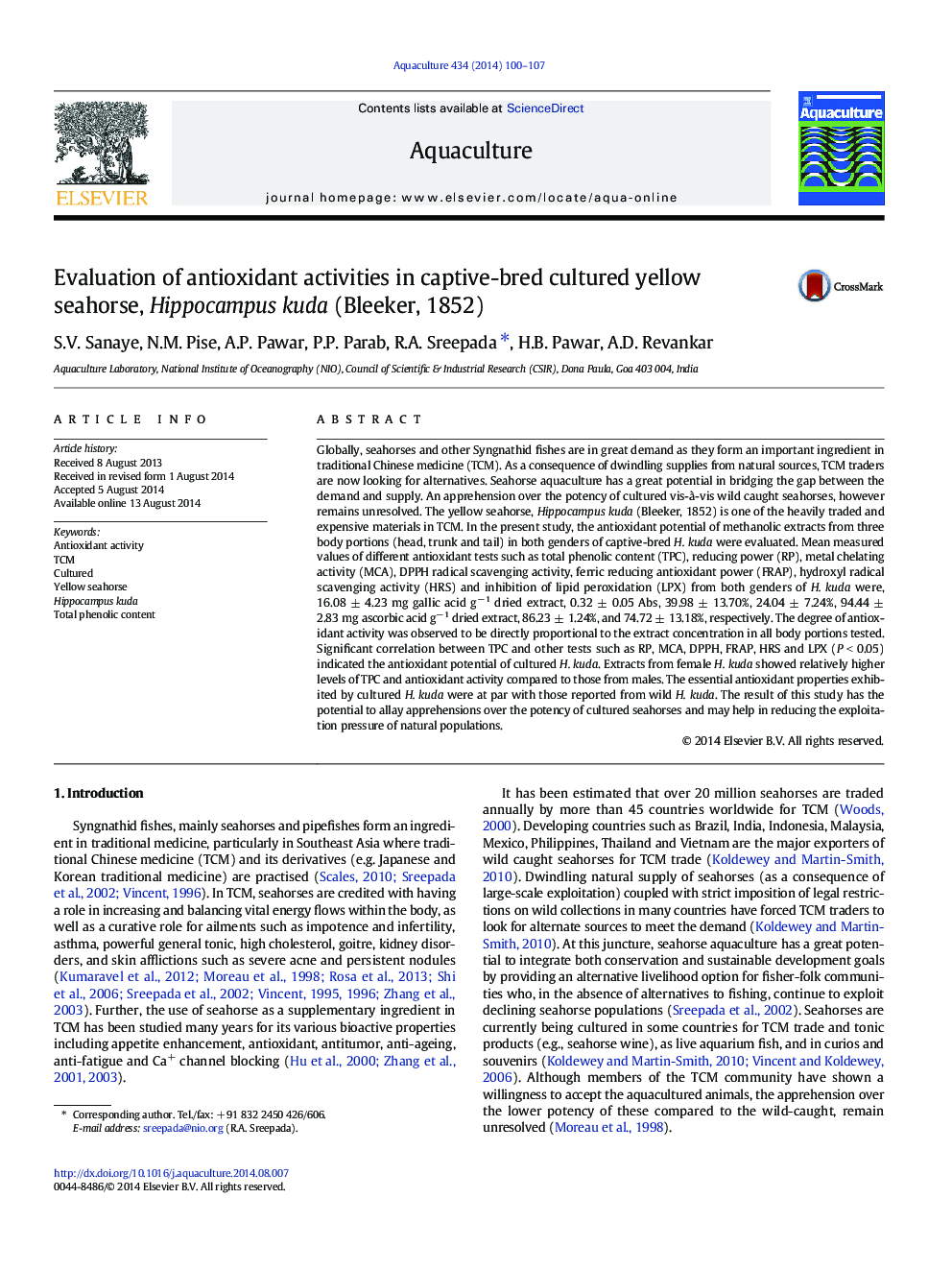| کد مقاله | کد نشریه | سال انتشار | مقاله انگلیسی | نسخه تمام متن |
|---|---|---|---|---|
| 2421724 | 1552853 | 2014 | 8 صفحه PDF | دانلود رایگان |

• Wild caught seahorses are more preferred in TCM trade compared to cultured ones.
• We evaluated TPC and other antioxidant activities in captive-bred cultured H. kuda.
• Antioxidant activities from cultured H. kuda were similar to wild caught ones.
• Study result has a potential to allay apprehensions on potency of cultured seahorses.
Globally, seahorses and other Syngnathid fishes are in great demand as they form an important ingredient in traditional Chinese medicine (TCM). As a consequence of dwindling supplies from natural sources, TCM traders are now looking for alternatives. Seahorse aquaculture has a great potential in bridging the gap between the demand and supply. An apprehension over the potency of cultured vis-à-vis wild caught seahorses, however remains unresolved. The yellow seahorse, Hippocampus kuda (Bleeker, 1852) is one of the heavily traded and expensive materials in TCM. In the present study, the antioxidant potential of methanolic extracts from three body portions (head, trunk and tail) in both genders of captive-bred H. kuda were evaluated. Mean measured values of different antioxidant tests such as total phenolic content (TPC), reducing power (RP), metal chelating activity (MCA), DPPH radical scavenging activity, ferric reducing antioxidant power (FRAP), hydroxyl radical scavenging activity (HRS) and inhibition of lipid peroxidation (LPX) from both genders of H. kuda were, 16.08 ± 4.23 mg gallic acid g− 1 dried extract, 0.32 ± 0.05 Abs, 39.98 ± 13.70%, 24.04 ± 7.24%, 94.44 ± 2.83 mg ascorbic acid g− 1 dried extract, 86.23 ± 1.24%, and 74.72 ± 13.18%, respectively. The degree of antioxidant activity was observed to be directly proportional to the extract concentration in all body portions tested. Significant correlation between TPC and other tests such as RP, MCA, DPPH, FRAP, HRS and LPX (P < 0.05) indicated the antioxidant potential of cultured H. kuda. Extracts from female H. kuda showed relatively higher levels of TPC and antioxidant activity compared to those from males. The essential antioxidant properties exhibited by cultured H. kuda were at par with those reported from wild H. kuda. The result of this study has the potential to allay apprehensions over the potency of cultured seahorses and may help in reducing the exploitation pressure of natural populations.
Journal: Aquaculture - Volume 434, 20 October 2014, Pages 100–107